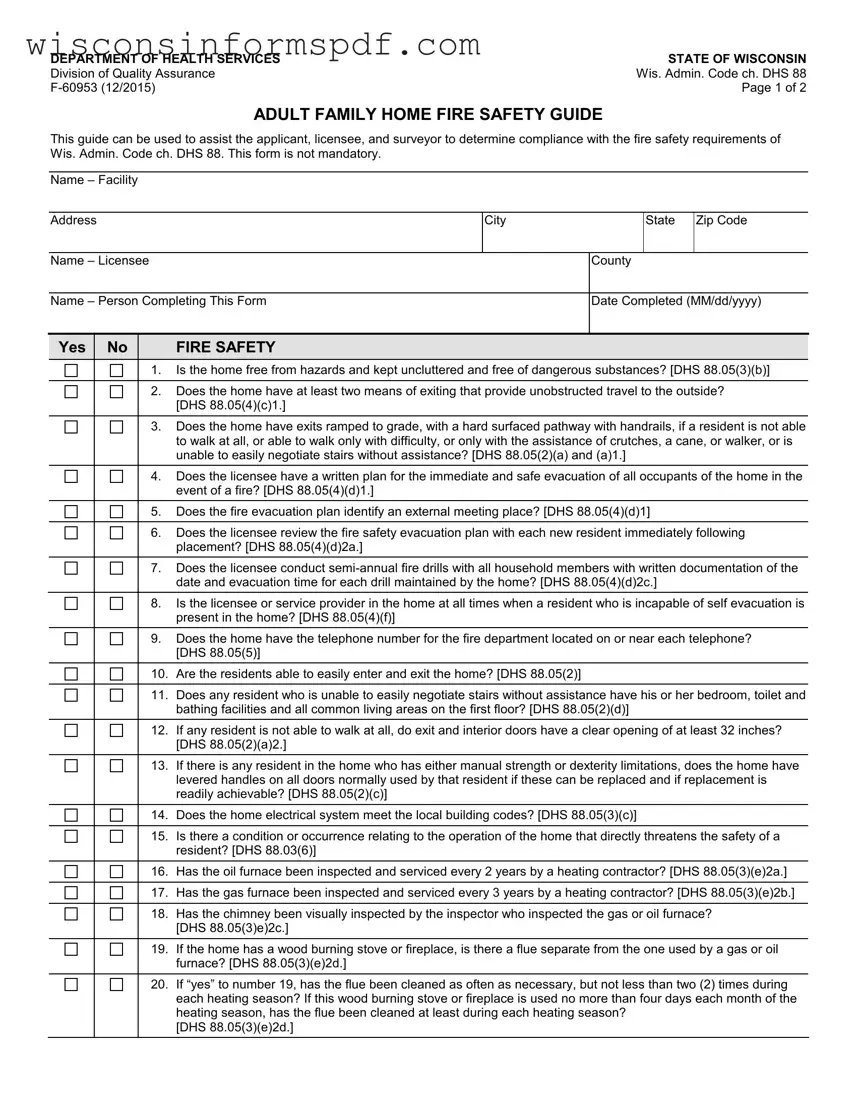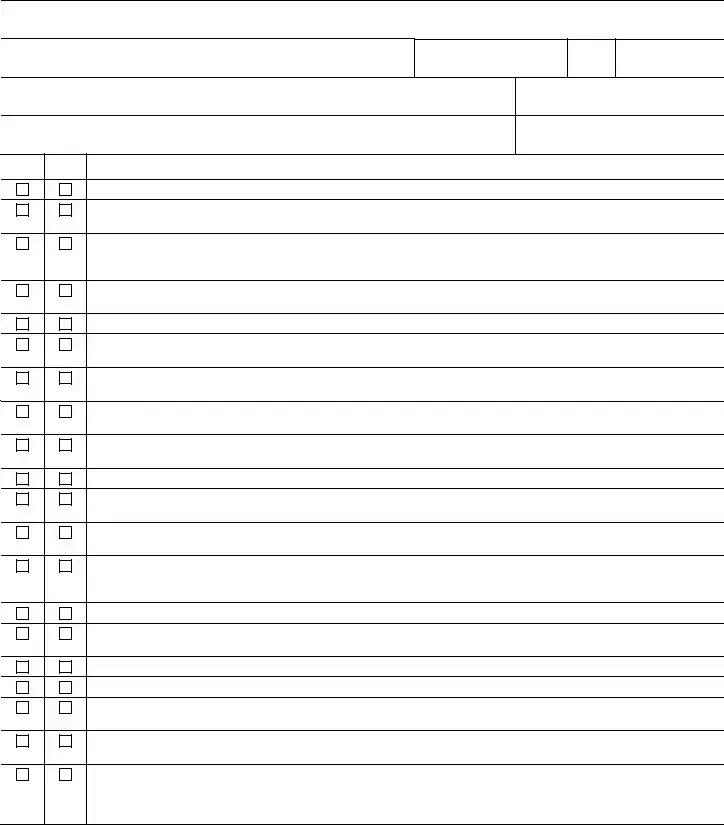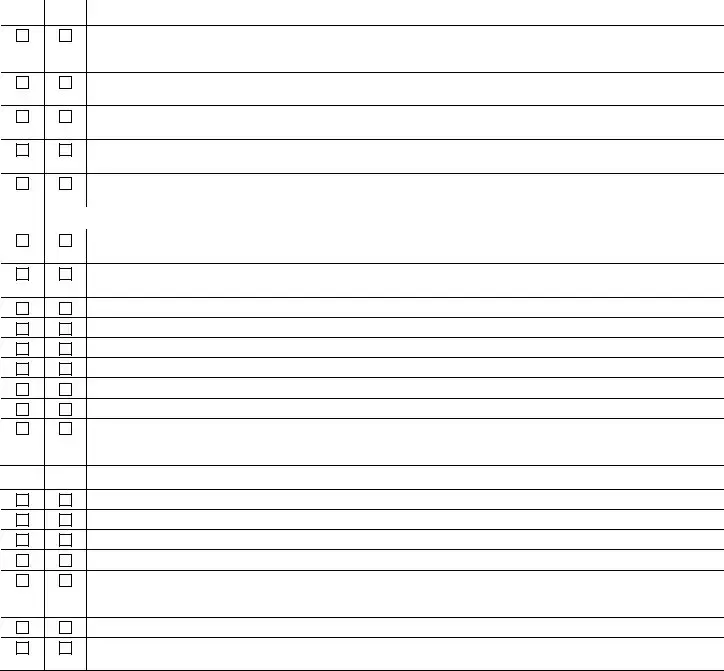What is the purpose of the Wisconsin F 60953 form?
The Wisconsin F 60953 form serves as a guide for adult family homes to comply with the fire safety requirements outlined in Wis. Admin. Code ch. DHS 88. Its purpose is to assist applicants, licensees, and surveyors in ensuring that these facilities meet necessary fire safety standards, thereby safeguarding the well-being of residents. While using this form is not mandatory, it provides a comprehensive checklist to promote a safe environment.
Who needs to complete the F 60953 form?
Licensees, or individuals who hold the responsibility of managing an adult family home, are the primary users of this form. Additionally, any person tasked with ensuring compliance with fire safety regulations in such a home may find it beneficial to complete the form. Its layout assists in the systematic evaluation of fire safety provisions within the facility.
How frequently should fire drills be conducted in an adult family home according to the form?
Semi-annual fire drills are mandated for all household members, as per the guidelines encapsulated in the form. It underscores the importance of regular practice to ensure efficiency and preparedness in the event of a fire, enhancing the ability to safeguard all occupants effectively.
Is it necessary for the licensee to have a written evacuation plan?
Yes, possessing a written plan for the immediate and safe evacuation of all residents during a fire is crucial. This plan must identify an external meeting place and should be reviewed with each new resident upon their placement in the home. Such preparedness is vital for ensuring swift action in emergencies.
What provisions must be made for residents unable to easily evacuate?
For residents who cannot easily evacuate on their own due to mobility issues or other disabilities, the home must have exits ramped to grade with a hard-surfaced pathway and handrails. Furthermore, bedrooms, toilet and bathing facilities, and all common living areas for these residents should ideally be located on the first floor to facilitate easier evacuation.
What are the requirements for the location and maintenance of smoke detectors?
Smoke detectors must be installed on every floor level, including in habitable rooms (except kitchens and bathrooms), at the head of each open and enclosed stairway, and on the ceiling of living rooms, family rooms, sleeping rooms, and basements. Licensees are responsible for ensuring that these detectors are kept in working condition, conducting monthly tests and taking immediate action to repair or replace units that are not operating.
What type of fire extinguishers are required, and where should they be located?
Each floor must have a properly rated fire extinguisher (minimum 2A, 10B – C rating), mounted and located at strategic points such as the head of stairways and near the kitchen. Importantly, these extinguishers should be maintained in a readily usable condition, with annual inspections by an authorized dealer or local fire department.
How are safety hazards and clutter managed according to the form?
The form stipulates that the home must be kept free from hazards, uncluttered, and devoid of dangerous substances. This is to minimize risk factors that could impede evacuation or exacerbate a fire, thereby ensuring a safer environment for residents.
Are there any specific requirements for heating system inspections?
Yes, the form outlines specific requirements for maintained heating systems. Oil furnaces must be inspected and serviced every two years, while gas furnaces require inspection and servicing every three years. Additionally, if the home is equipped with a wood burning stove or fireplace, the flue must be cleaned as often as necessary, maintaining safety and efficiency.
In the event of a fire, what is the protocol for notifying licensing agencies?
If a fire occurs that requires the assistance of the fire department, the licensee must inform the licensing agency within 72 hours of the occurrence. This ensures that proper oversight is maintained and that any necessary follow-up actions can be taken to prevent future incidents.


